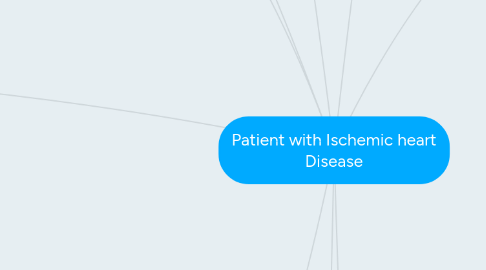
1. Drug Therapy
1.1. Diuretics
1.1.1. Decreas fluid volume, preload, pulmonaery venous pressure
1.1.1.1. Loop Diuretics
1.1.1.1.1. Lasix
1.1.1.1.2. Bumex
1.1.1.2. Thiazide Diuretics
1.1.1.2.1. HCTZ
1.1.1.2.2. Metolazone
1.1.1.3. Potassium-Sparing Diuretics
1.1.1.3.1. Spironolactone
1.1.1.3.2. Eplerenone
1.2. Renin-Angiotesin-Aldosterone Inhibitors
1.2.1. Dilate venules and arterioles, improve renal blood flow, decrease fluid volume, relieve HF symptoms, promote reverse remodeling, decrease morbidiy and mortality
1.2.1.1. ACE Inhibitors
1.2.1.1.1. Captopril
1.2.1.1.2. Benazepril
1.2.1.1.3. enalapril
1.2.1.2. Angiotensin II Blockers
1.2.1.2.1. Losartan
1.2.1.2.2. valsartan
1.3. Vasodilators
1.3.1. Reduce cardiac afterload, dilate the arterioles of the kidneys, decrease BP, decrease preload, relieve HF symptoms
1.3.1.1. hydralizine
1.3.1.2. isosorbide
1.3.1.3. nitrates
1.3.1.4. nesiritide
1.3.1.5. nitroprusside
1.4. B-Adrenergic Blockers
1.4.1. Promote reverse remodeling, decrease afterload, inhibit SNS, Decrease mobidity ad mortality
1.4.1.1. metoprolol
1.4.1.2. bisoprolol
1.4.1.3. carvedilol
1.5. B-Adrenergic Agonist
1.5.1. Increase contractility, Increase CO, increase HR, Produce mild vasodilation, increase stroke volume and CO,
1.5.1.1. dopamine
1.5.1.2. dobutamine
1.5.2. Phosphodiesterase Inhibitor
1.5.2.1. milrinone
1.5.3. Digitalis Glycoside
1.5.3.1. digoxin
1.6. Morphine
1.6.1. decrease anxiety, decrease preload and afterload
1.7. Anticoagulants
1.7.1. prevent thromboembolism
1.7.1.1. recommend for pt's with an EF <20% and/or a-fib
2. Risk Factors
2.1. Modifiable
2.1.1. Diet
2.1.2. Exercise
2.1.3. Weight
2.1.4. Smoking Habits
2.1.5. Stress
2.2. Non-Modifiable
2.2.1. Gender
2.2.2. Race
2.2.3. Family History
2.2.4. Age
3. Treatments
3.1. Treat underlying cause
3.2. Circulatory assist device (VAD)
3.3. Daily weights
3.4. Sodium- and possibly, fluid restriction
3.5. Intraaortic ballon pump
3.6. Surgical techniques
3.7. Ultrafiltration
4. Diagnostics
4.1. Presence of HR symptoms with normal EF
4.2. HPI
4.3. Serum chemistry
4.3.1. BNP
4.3.2. NT-proBNP
4.3.3. LFT
4.3.4. thyroid function test
4.3.5. CBC
4.3.6. Lipid Profile
4.3.7. Kidney function test
4.3.8. Urinalysis
4.4. Imaging
4.4.1. CXR
4.4.2. 2D Echo
4.4.3. Nuclear imaging
4.5. 12-Lead ECG
4.6. Stress test
4.6.1. Exercise stress test
4.6.2. Chemical stress test
4.7. Hemodynamic moniotring
4.8. Cardiac Catheterization
5. Optimal functioning outcomes identified from nursing perspective
5.1. Client will understand medication names, purpose, dosage, schedule, precautions and side effects.
5.2. S/S that necessitate immediate medical attention: chest pain, dyspnea, weight gain >5 lbs in a week,
5.3. Reinforcement that crdiomyopathy is a chronic disease requiring lifetime treatment.
5.4. Importance of abstaining from alcohol which increases cardiac muscle deterioration.
5.5. Need for physical support from family and outside agencies as disease progresses.
5.6. Availability of community and medical support organizations such as the American Heart Association.
6. References:Lewis, S. (2011). Heart Failure. In <i>Medical-surgical nursing: Assessment and management of clinical problems.</i> (9th ed.). St. Louis, Mo.: Elsevier/Mosby. Monahan, Neighbors, & Green. (2011). Heart Failure. In Manual of Medical-Surgical Nursing: A Care Planning Resource (7th ed.). Maryland Heights: Elsevier/Mosby.
7. Optimal Functioning Outcome Identified by the Client
7.1. What is important in your life?
7.1.1. relief and/or rdeuction inof heart failure symptoms
7.1.2. Have appropriate support system in place
7.1.3. Have minimal limitation of activites
7.2. What do you look forward to each day?
7.2.1. Spending time with family and friends
7.2.2. Perform activities without assistance
7.3. What do you enjoy?
7.3.1. Enjoying activiites that there were able to perform prior to event.
7.3.2. Being self reliant
7.4. What are your goals when you leave the hospital/rehab/home?
7.4.1. Manage disease effectively
7.4.2. Be able to return to daily activities with minimal residuals.
7.4.3. Be able to live in comfort and without pain or fear
7.5. How does this event affect your life?
7.5.1. Limits ability to perform activities prior to event
7.5.2. Increased amount of daily medications and health status monitoring
8. Heart Failure
8.1. Systolic Failure (left ventricle)
8.1.1. Causes
8.1.1.1. Myocardial Infarction
8.1.1.2. increased afterload (hypertension)
8.1.1.3. Cardiomyopathy
8.1.1.4. Valvular heart disease
8.1.2. S/S
8.1.2.1. LV Heaves
8.1.2.2. Pulsus alternas
8.1.2.2.1. alternating pulses: strong, weak
8.1.2.3. Increased HR
8.1.2.4. PMI displaced inferiorly and posteriorly
8.1.2.5. Decreased PaO2, sligh increase in PaCO2
8.1.2.5.1. Poor O2 exchange
8.1.2.6. Pulmonary edmea
8.1.2.7. S3 and S4 heart sounds
8.1.2.8. Leural effusion
8.1.2.9. Weakness, fatigue
8.1.2.10. Anxiety and depression
8.1.2.11. Dyspnea
8.1.2.12. Shallow Respiration
8.1.2.13. Paroxysmal nocturnal dyspnea
8.2. Diastolic Failure (right ventricle)
8.2.1. Causes
8.2.1.1. Anemia
8.2.1.1.1. decreased O2 carrying capacity
8.2.1.2. Infection
8.2.1.2.1. Increased O2 demand stimulating increased CO
8.2.1.3. Thyrotoxicosis
8.2.1.3.1. change in metabolic rate, increased HR and workload of the heart
8.2.1.4. Hypothyroidism
8.2.1.4.1. Indirectly predisposition to atherosclerosis, decreases myocardial contractility
8.2.1.5. Dysrhythmias
8.2.1.5.1. decrease CO and increase workload and O2 requirements
8.2.1.6. Bacterial endocarditis
8.2.1.6.1. infection increases metabolic and O2 demands
8.2.1.6.2. Valve dysfunction causes stenosis and regurg.
8.2.1.7. PE
8.2.1.7.1. incresed pulmonary pressure resulting from obstruction that leads to pulmonary HTN
8.2.1.8. Pagets Disease
8.2.1.8.1. Increased workload due to increased vascular bed in skeletal muscle
8.2.2. S/S
8.2.2.1. RV heaves
8.2.2.2. Murmurs
8.2.2.3. JVD
8.2.2.4. Edema
8.2.2.4.1. pedal, scroum, sacrum
8.2.2.4.2. Bilateral dependent edema
8.2.2.4.3. Anasarca
8.2.2.5. Weight gain
8.2.2.6. Increased HR
8.2.2.7. Ascites
8.2.2.8. Fatigue
8.2.2.9. Anxiety, depresion
8.2.2.10. Anorexia and GI bloating
8.2.2.10.1. nausea
